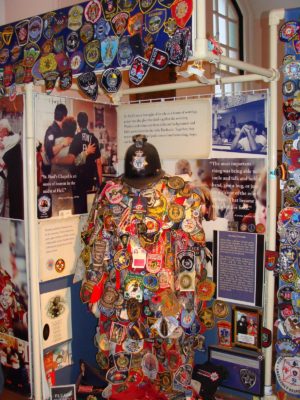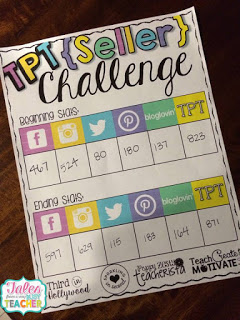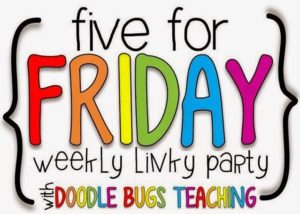Happy Birthday Dr. Seuss!
I have posted a new item on my TpT store to celebrate Dr. Seuss’ birthday!
Celebrate Dr. Seuss’ birthday by using these awesome Common Core aligned activities in your classroom! 🙂
All
About Dr. Seuss
About Dr. Seuss
Who
is Dr. Seuss?
is Dr. Seuss?
Writing
Craftivity
Craftivity
Story
Structure
Structure
Rhyming
Words
Words
Vowel
Sounds
Sounds
Stretching
Sentence
Sentence
Cat
in the Hat Craftivity
in the Hat Craftivity
All
About Dr. Seuss
About Dr. Seuss
CCSS.ELA-Literacy.RI.2.2
Identify the
main topic of a multi-paragraph text as well as the focus of specific
paragraphs within the text
Identify the
main topic of a multi-paragraph text as well as the focus of specific
paragraphs within the text
•Use
an informational text piece like Who
Was Dr. Seuss or
The Boy on Fairfield Street to
help students achieve the goal of CCSS
R.I. 2.2. I used the Scholastic News Weekly Reader Get
to Know Seuss. The key provided uses information found
from Scholastic’s Weekly Reader.
an informational text piece like Who
Was Dr. Seuss or
The Boy on Fairfield Street to
help students achieve the goal of CCSS
R.I. 2.2. I used the Scholastic News Weekly Reader Get
to Know Seuss. The key provided uses information found
from Scholastic’s Weekly Reader.
Who
is Dr. Seuss?
is Dr. Seuss?
CCSS.ELA-Literacy.W.2.2 Write
informative/explanatory texts in which they introduce a topic, use facts and
definitions to develop points, and provide a concluding statement or section.
informative/explanatory texts in which they introduce a topic, use facts and
definitions to develop points, and provide a concluding statement or section.
CCSS.ELA-Literacy.W.2.8 Recall
information from experiences or gather information from provided sources to
answer a question.
information from experiences or gather information from provided sources to
answer a question.
•After
completing “All About Dr. Seuss” have students use a Bubble Map to organize
their ideas for an Informative Writing piece. The information provided on my
sample Bubble Map is information from the Scholastic News Weekly Reader.
completing “All About Dr. Seuss” have students use a Bubble Map to organize
their ideas for an Informative Writing piece. The information provided on my
sample Bubble Map is information from the Scholastic News Weekly Reader.
•Once
students have completed the Bubble Map, they can fill out their 4 square
writing piece using their Bubble Map as a guide. Students should add details
and more descriptive words to create an exciting informative writing piece.
students have completed the Bubble Map, they can fill out their 4 square
writing piece using their Bubble Map as a guide. Students should add details
and more descriptive words to create an exciting informative writing piece.
•Use
the Writing Craftivity to
display students’ final draft of their writing.
the Writing Craftivity to
display students’ final draft of their writing.
Story
Structure
Structure
CCSS.ELA-Literacy.RL.2.5 Describe the
overall structure of a story, including describing how the beginning introduces
the story and the ending concludes the action.
overall structure of a story, including describing how the beginning introduces
the story and the ending concludes the action.
•Read
one of Dr. Seuss’ stories and fill out the Story Structure chart with the
correct information. You’ll need to have taught a lesson on story structure
(setting, plot, protagonist, antagonist, etc.)
one of Dr. Seuss’ stories and fill out the Story Structure chart with the
correct information. You’ll need to have taught a lesson on story structure
(setting, plot, protagonist, antagonist, etc.)
•You
can even take it one step further and ask students to explain the moral of Dr.
Seuss’ story. He usually has a lesson to be learned at the end of his stories.
can even take it one step further and ask students to explain the moral of Dr.
Seuss’ story. He usually has a lesson to be learned at the end of his stories.
•For
this example, I used the story Yertle
the Turtle.
this example, I used the story Yertle
the Turtle.
Rhyming
Words
Words
CCSS.ELA-Literacy.RL.2.4 Describe how
words and phrases (e.g., regular beats, alliteration, rhymes, repeated lines)
supply rhythm and meaning in a story, poem, or song.
words and phrases (e.g., regular beats, alliteration, rhymes, repeated lines)
supply rhythm and meaning in a story, poem, or song.
•Print
the cards on card stock and laminate for durability.
the cards on card stock and laminate for durability.
•Have
your students sort out the words, putting the rhyming words together. Students
can use the sheet with the empty boxes to place their groups of cards together.
For example, all of these rhyming words would be placed on top of one another
in one box: all, ball, fall, call, tall.
your students sort out the words, putting the rhyming words together. Students
can use the sheet with the empty boxes to place their groups of cards together.
For example, all of these rhyming words would be placed on top of one another
in one box: all, ball, fall, call, tall.
•There
are 12 empty boxes on the sorting sheet because there are twelve separate
rhyming sounds. You can
place these sorting sheets into sheet protectors to keep the sheets from
tearing.
are 12 empty boxes on the sorting sheet because there are twelve separate
rhyming sounds. You can
place these sorting sheets into sheet protectors to keep the sheets from
tearing.
•Once
students have sorted all of the rhymes, have them pick one stack of rhymes.
They should pick a card from their stack and create a sentence using the word
they picked at the end of their sentence. Students should keep track of their
sentences on the paper provided. Students should create a sentence with each
card from their pile and use it at the end of the sentence. When they’re done,
they’ll have a silly Dr. Seuss-like story.
They can draw a funny picture to go with their story.
students have sorted all of the rhymes, have them pick one stack of rhymes.
They should pick a card from their stack and create a sentence using the word
they picked at the end of their sentence. Students should keep track of their
sentences on the paper provided. Students should create a sentence with each
card from their pile and use it at the end of the sentence. When they’re done,
they’ll have a silly Dr. Seuss-like story.
They can draw a funny picture to go with their story.
•For
example, if I chose cards from my pile (all, ball, fall, call, tall) I would
write sentences that might sound like this:
example, if I chose cards from my pile (all, ball, fall, call, tall) I would
write sentences that might sound like this:
“Come one, come ALL
The turtle is very TALL
Be careful of the flying BALL
The weather will CALL
We will take a great FALL”
Vowel
Sounds (Long and Short/Vowel Teams)
Sounds (Long and Short/Vowel Teams)
CCSS.ELA-Literacy.RF.2.3b Know
spelling-sound correspondences for additional common vowel teams.
spelling-sound correspondences for additional common vowel teams.
CCSS.ELA-Literacy.RF.2.3a Distinguish
long and short vowels when reading regularly spelled one-syllable words.
long and short vowels when reading regularly spelled one-syllable words.
•Print
the cards on card stock and laminate for durability.
the cards on card stock and laminate for durability.
•Have
your students sort out the words, putting the same vowel sounds together.
Students can use the sheet with the empty boxes to place their groups of cards
together.
your students sort out the words, putting the same vowel sounds together.
Students can use the sheet with the empty boxes to place their groups of cards
together.
•When
students are done sorting, they can write their vowels on the sheets provided.
students are done sorting, they can write their vowels on the sheets provided.
Stretching
Your Sentence
Your Sentence
CCSS.ELA-Literacy.L.2.1f Produce, expand,
and rearrange complete simple and compound sentences (e.g.,
The boy watched the movie; The little boy watched the movie; The action movie
was watched by the little boy).
and rearrange complete simple and compound sentences (e.g.,
The boy watched the movie; The little boy watched the movie; The action movie
was watched by the little boy).
•Students
can pick a Dr. Seuss character and create a fun, detailed, silly sentence about
them!
can pick a Dr. Seuss character and create a fun, detailed, silly sentence about
them!
•Use
the format provided on the page to help students “stretch their sentence.”
the format provided on the page to help students “stretch their sentence.”
•You
can make as many copies of the page, depending on how many sentences you want
them to create, to give to your students.
can make as many copies of the page, depending on how many sentences you want
them to create, to give to your students.
•Once
they’ve created some “stretched sentences,” they can pick their favorite and
draw a picture to go with it on the corresponding page.
they’ve created some “stretched sentences,” they can pick their favorite and
draw a picture to go with it on the corresponding page.
Cat
in the Hat Craftivity
in the Hat Craftivity
Create a fun Cat in the Hat with your
students to celebrate Dr. Seuss’ birthday! Follow the directions on the
corresponding pages below.
students to celebrate Dr. Seuss’ birthday! Follow the directions on the
corresponding pages below.
Thank you for being a part of my blog!
Happy Teaching and Happy Birthday Dr. Seuss!






